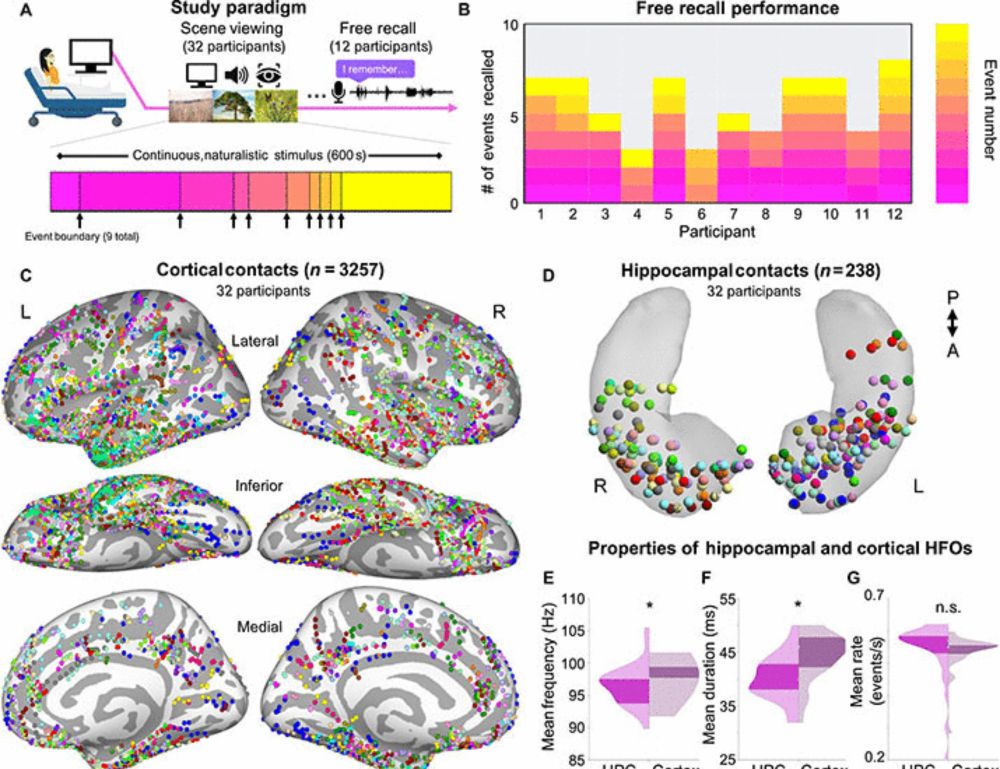
Motifs of human high-frequency oscillations structure processing and memory of continuous audiovisual narratives
HFOs are bursts of brain activity that coordinate the processing and memory integration of the continuous world around us.
We’re incredibly proud to share this work with you: science.org/doi/10.1126/...
A BIG thank you to my research mentors @stephanbickel.bsky.social and Ash Mehta, to the NIMH for supporting my work, to @zuckersom.bsky.social @northwellhealth.bsky.social, and to you for reading along!
02.08.2025 01:59 — 👍 0 🔁 0 💬 0 📌 0
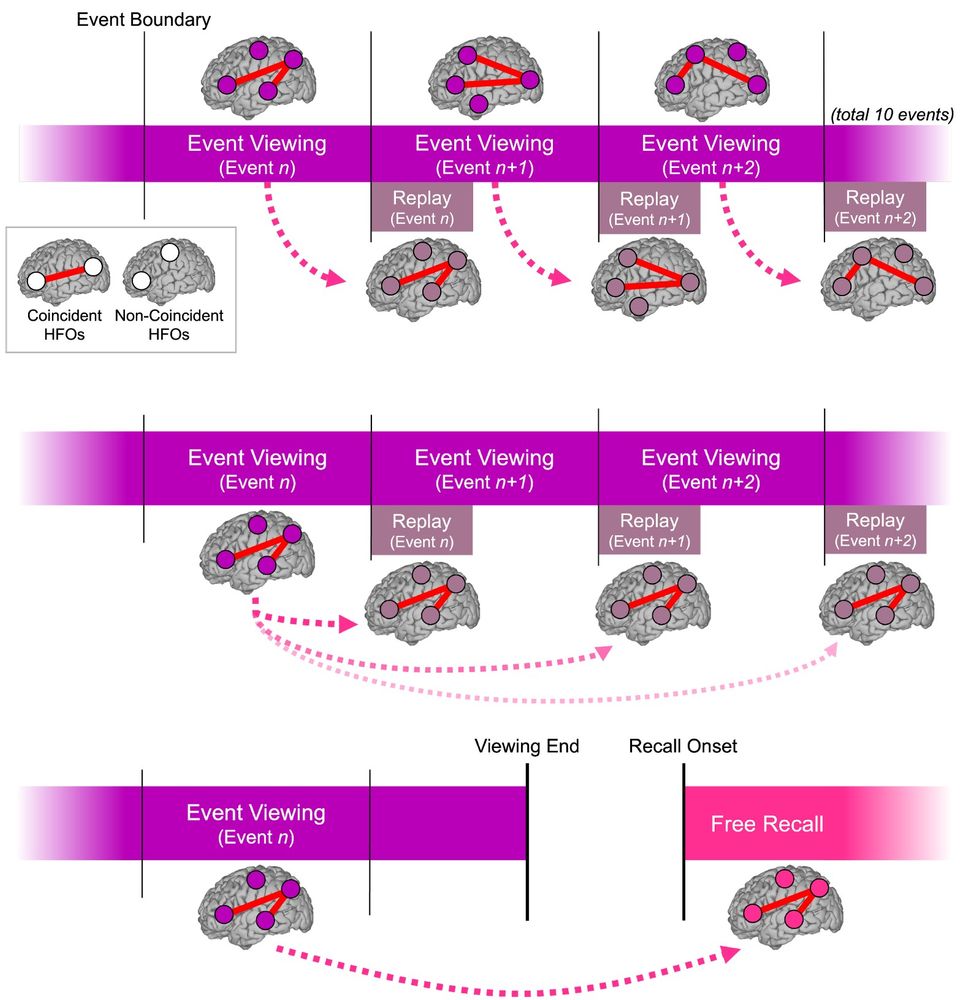
In summary, these findings suggest that HFOs across the hippocampal-cortical memory network represent a powerful coordinating mechanism. They may guide how our brains segment, encode, and retrieve rich, continuous episodic memories from our everyday lives (10/n)
02.08.2025 01:59 — 👍 1 🔁 0 💬 1 📌 0
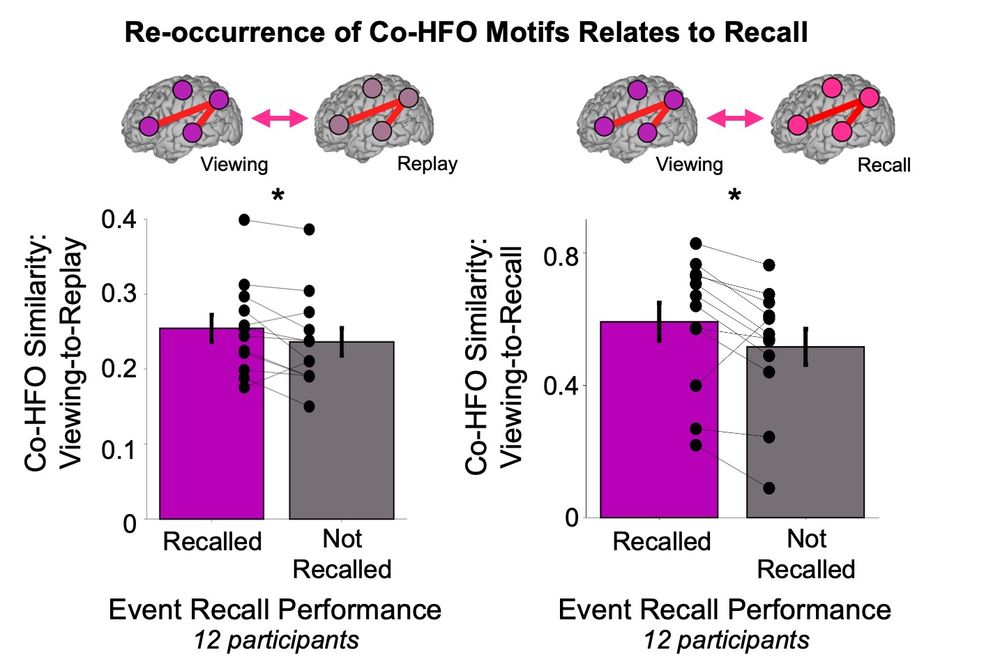
The strength of motif reactivation during replay and retrieval was related with whether participants later remembered the event. We also found that these unique motifs lingered for three subsequent replay periods. Hence, HFOs may help us bind new memories to older ones! (9/n)
02.08.2025 01:59 — 👍 0 🔁 0 💬 1 📌 0
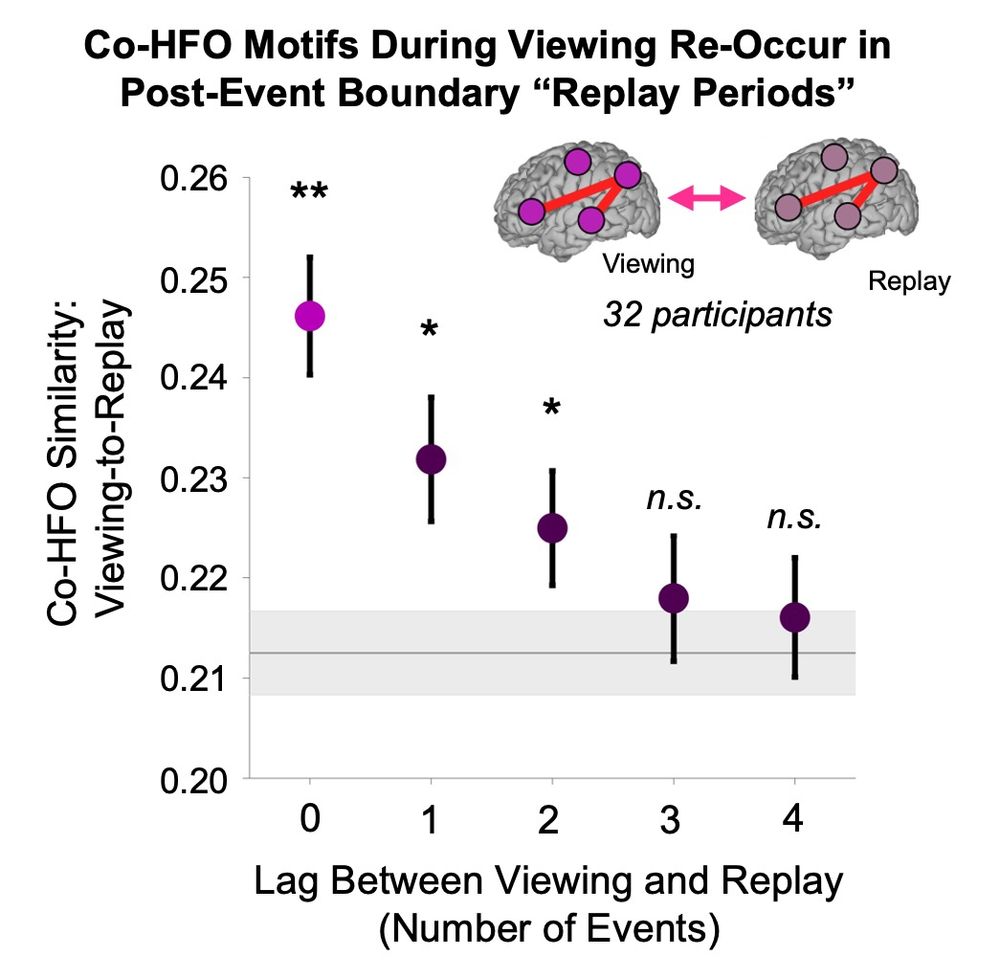
Co-HFO motifs showed specificity for events and re-occurred not only in the immediate post-boundary “replay period” but also during later recall. This links co-HFOs with the reinstatement of memories during consolidation and retrieval. (8/n)
02.08.2025 01:59 — 👍 0 🔁 0 💬 1 📌 0
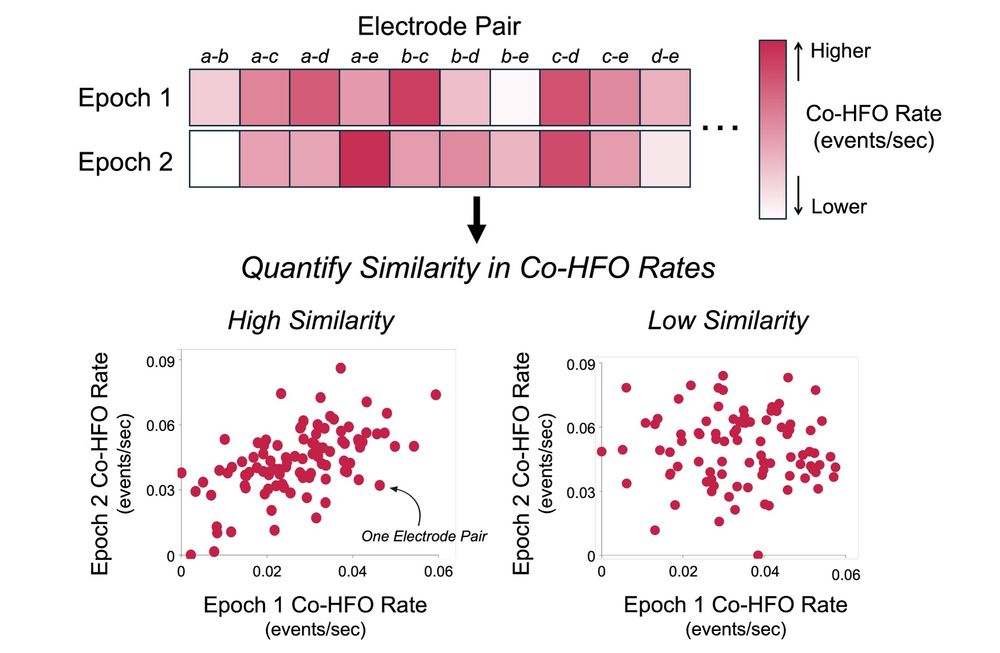
We then identified “co-HFO motifs,” or event-specific spatiotemporal patterns of co-HFOs that occurred during initial event viewing. We looked to see if these motifs re-emerged at event boundaries (replay) and during free recall (retrieval). (7/n)
02.08.2025 01:59 — 👍 0 🔁 0 💬 1 📌 0
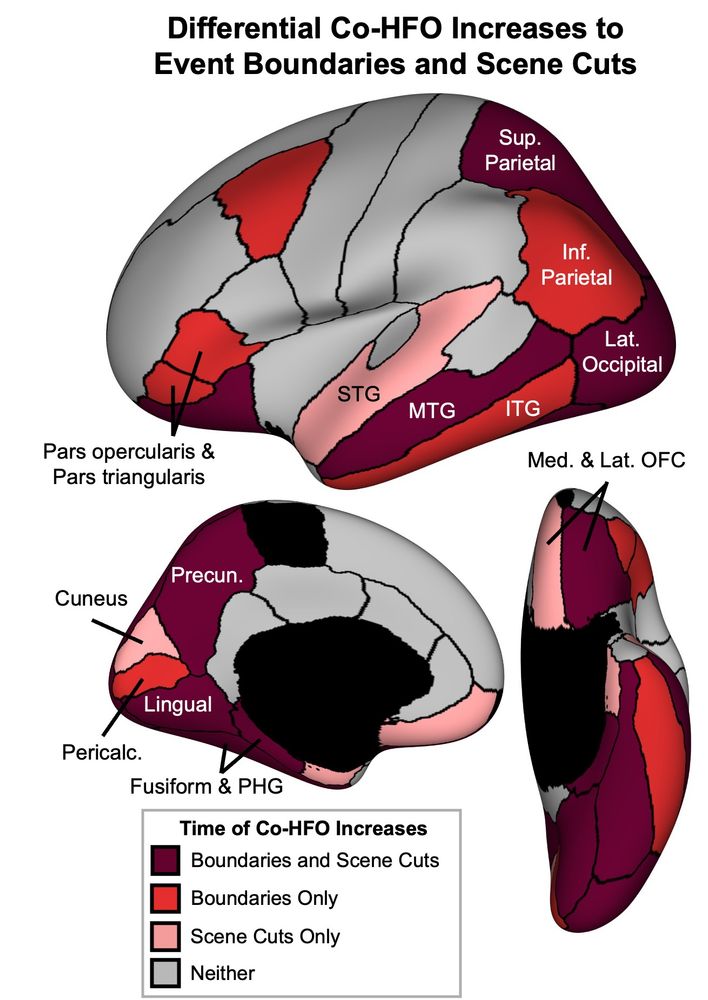
Further, co-HFO locations changed based on the “granularity” of the segmentation. Major event boundaries were more associated with co-HFOs in higher-order association cortices while simpler boundaries (e.g. camera angle changes) largely activated lower-order visual regions. (6/n)
02.08.2025 01:59 — 👍 0 🔁 0 💬 1 📌 0
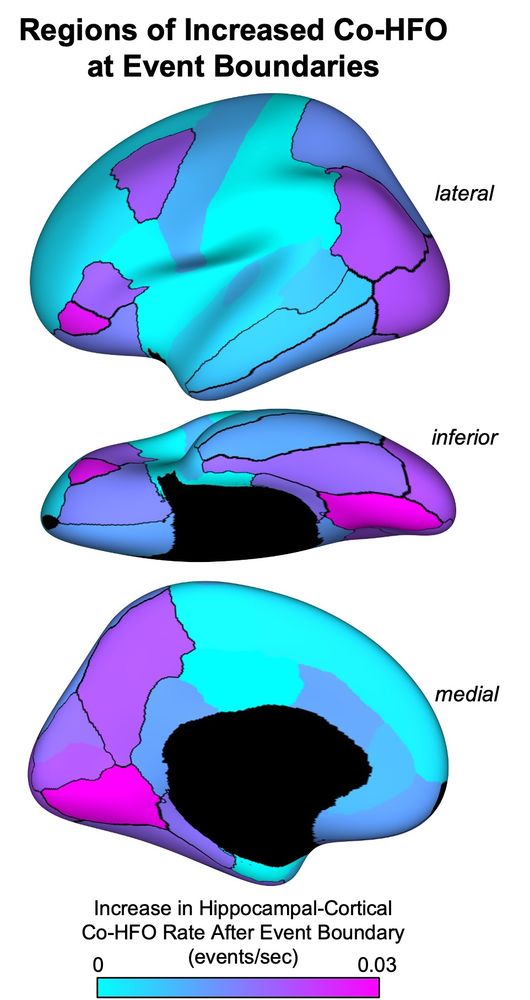
We also looked beyond the hippocampus and found that coincident HFOs (co-HFOs) across the hippocampal-cortical network also increase after event boundaries. Interestingly, these events predominate in cortical regions that have been previously shown to underlie event segmentation.
02.08.2025 01:59 — 👍 0 🔁 0 💬 1 📌 0

Our human intracranial recordings allowed us to localize these HFO increases to the right-anterior hippocampus and the CA1 subfield. This specificity supports models where the anterior hippocampus integrates information across longer timescales. (4/n)
02.08.2025 01:59 — 👍 0 🔁 0 💬 1 📌 0
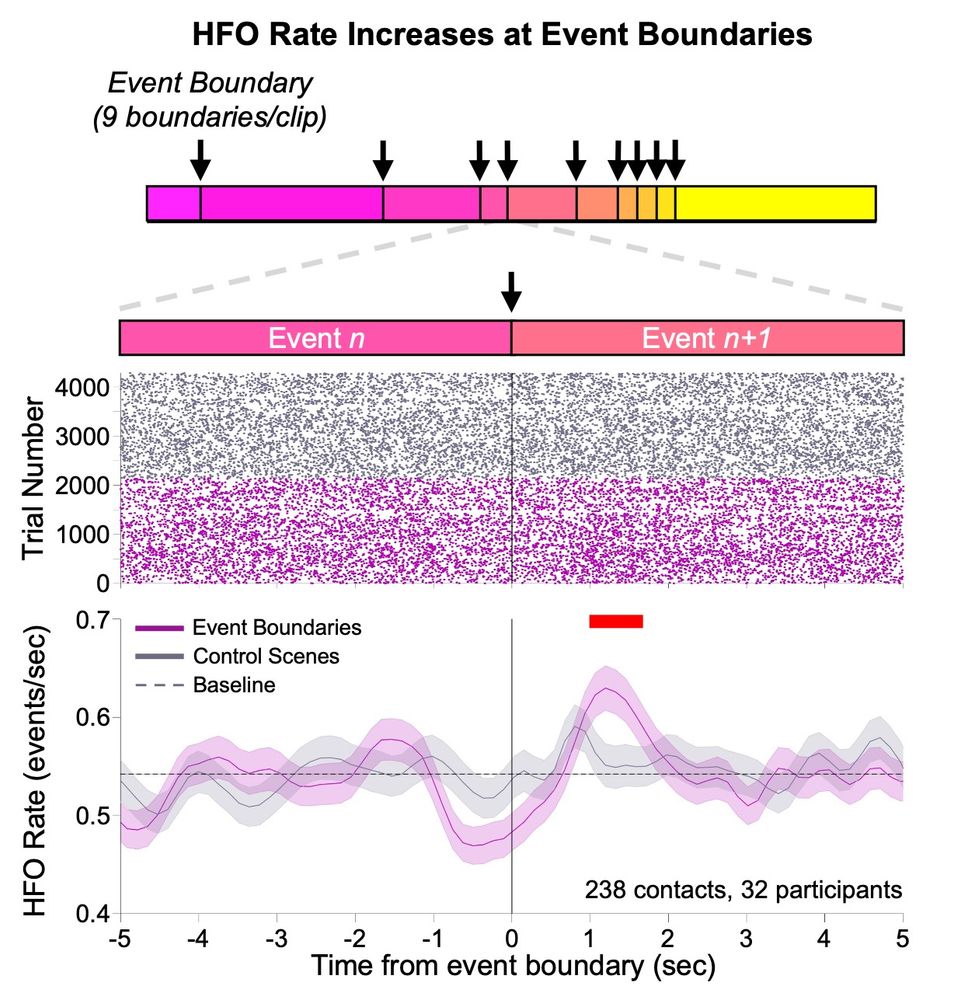
HFOs are a highly-synchronizing phenomenon, and we found that HFOs increase in activity ~2sec after the brain detects an “event boundary,” or timepoints where one “chunk” of an experience ends and another begins. This is a critical window for memory consolidation, or “replay.”
02.08.2025 01:59 — 👍 0 🔁 0 💬 1 📌 0
When we go about our days, we experience a continuous stream of information. But when we recall it later, we tend to find that we’ve “chunked” this experience into individual, meaningful episodes. This process is called event segmentation. (2/n)
02.08.2025 01:59 — 👍 0 🔁 0 💬 1 📌 0
How does the human brain process the continuous world around us and transform it into distinct memories? Our latest research, recently published in Science Advances @science.org, uncovers how brain waves called high frequency oscillations (HFOs) may support this amazing feat! (1/n)
02.08.2025 01:59 — 👍 3 🔁 5 💬 1 📌 1

Motifs of human high-frequency oscillations structure processing and memory of continuous audiovisual narratives
HFOs are bursts of brain activity that coordinate the processing and memory integration of the continuous world around us.
We’re incredibly proud to share this work with you: science.org/doi/10.1126/...
A BIG thank you to my research mentors @stephanbickel.bsky.social and Ash Mehta, to the NIMH for supporting my work, to @zuckersom.bsky.social @northwellhealth.bsky.social, and to you for reading along!
(fin)
30.07.2025 01:23 — 👍 0 🔁 0 💬 0 📌 0
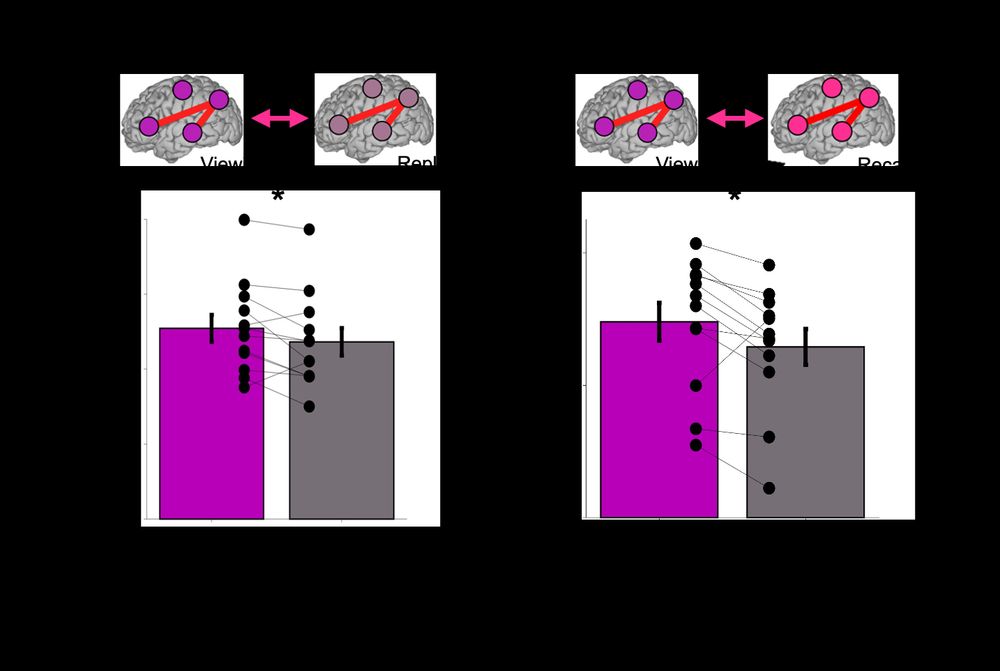
The strength of motif reactivation during replay and retrieval was related with whether participants later remembered the event. We also found that these unique motifs lingered for three subsequent replay periods. Hence, HFOs may help us bind new memories to older ones! (9/n)
30.07.2025 01:23 — 👍 0 🔁 0 💬 0 📌 0
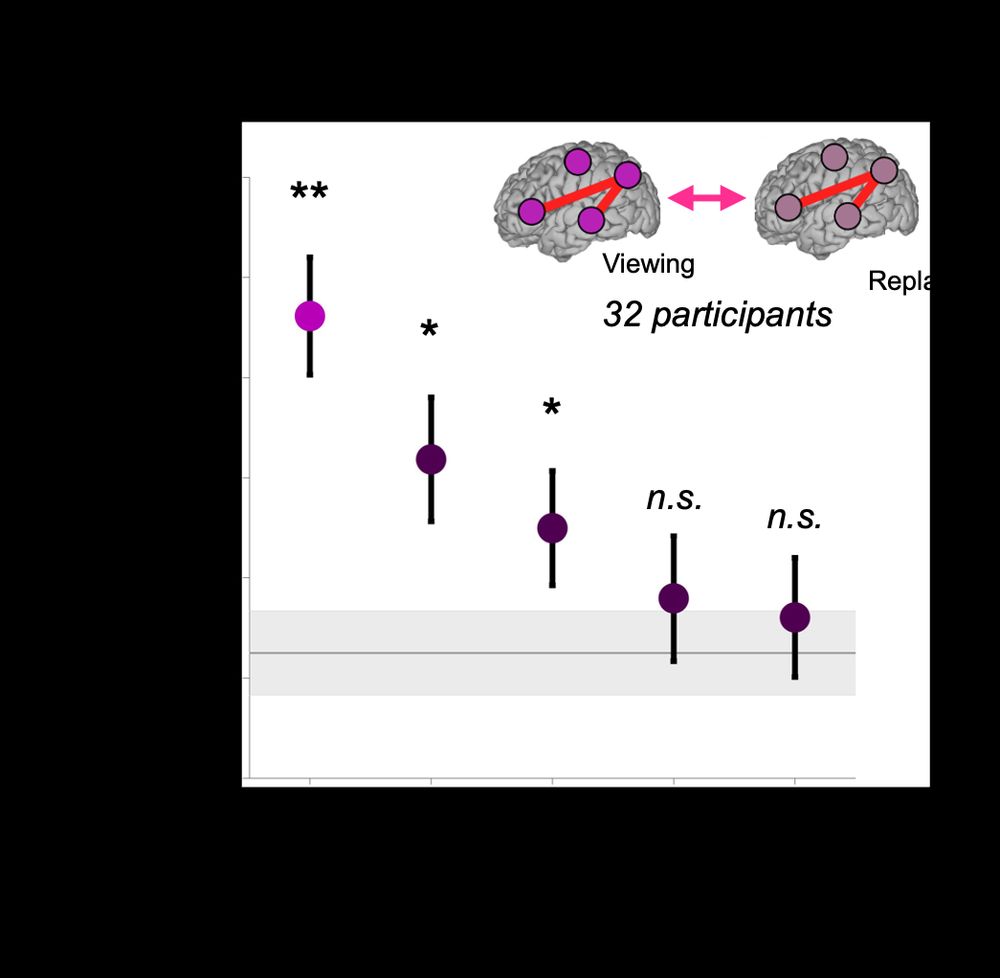
Co-HFO motifs showed specificity for events and re-occurred not only in the immediate post-boundary “replay period” but also during later recall. This links co-HFOs with the reinstatement of memories during consolidation and retrieval. (8/n)
30.07.2025 01:23 — 👍 0 🔁 0 💬 1 📌 0
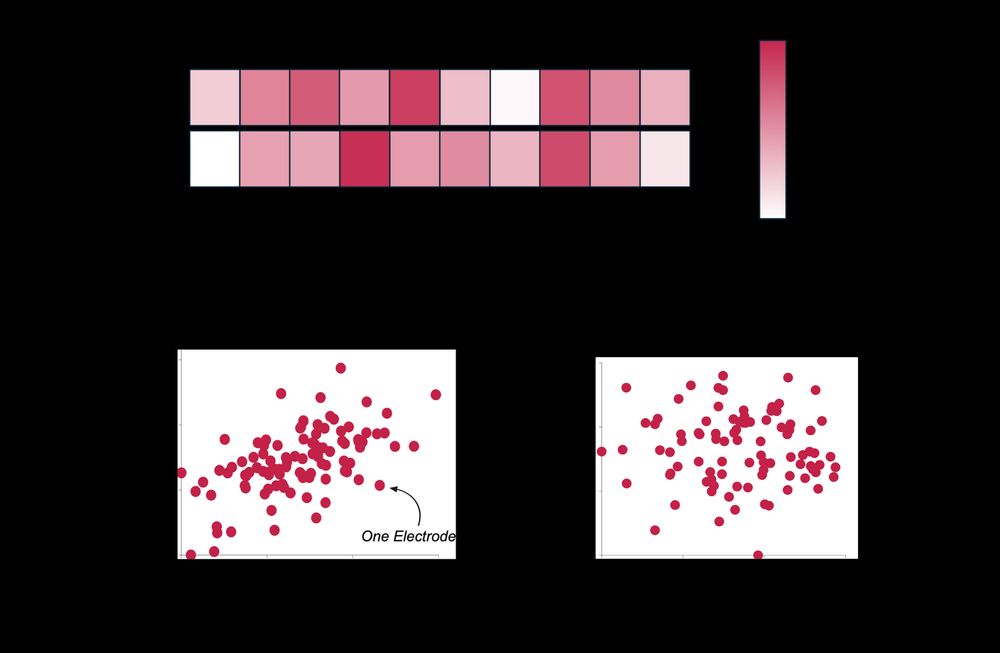
We then identified “co-HFO motifs,” or event-specific spatiotemporal patterns of co-HFOs that occurred during initial event viewing. We looked to see if these motifs re-emerged at event boundaries (replay) and during free recall (retrieval). (7/n)
30.07.2025 01:23 — 👍 0 🔁 0 💬 1 📌 0
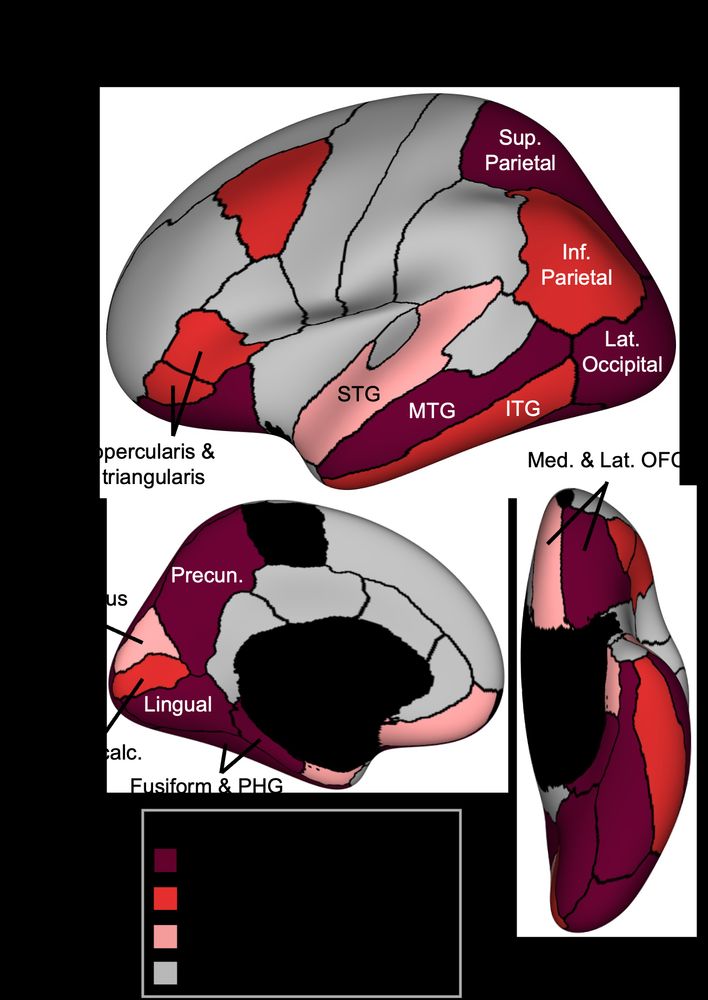
Further, co-HFO locations changed based on the “granularity” of the segmentation. Major event boundaries were more associated with co-HFOs in higher-order association cortices while simpler boundaries (e.g. camera angle changes) more predominantly activated lower-order visual regions. (6/n)
30.07.2025 01:23 — 👍 0 🔁 0 💬 1 📌 0
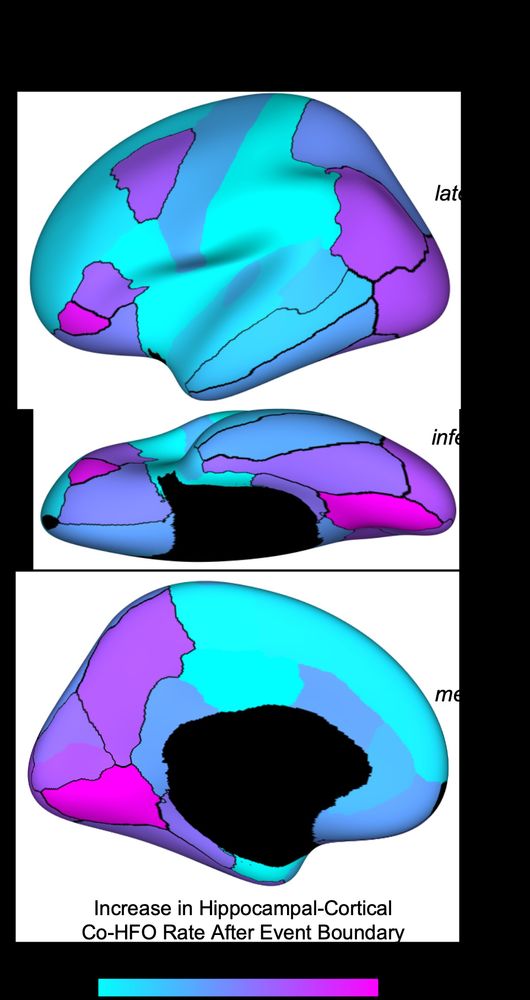
We also looked beyond the hippocampus and found that coincident HFOs (co-HFOs) across the hippocampal-cortical network also increase after event boundaries. Interestingly, these events predominate in cortical regions that have been previously shown to underlie event segmentation. (5/n)
30.07.2025 01:23 — 👍 0 🔁 0 💬 1 📌 0

Our human intracranial recordings allowed us to localize these HFO increases to the right-anterior hippocampus and the CA1 subfield. This specificity supports models where the anterior hippocampus integrates information across longer timescales. (4/n)
30.07.2025 01:23 — 👍 0 🔁 0 💬 1 📌 0
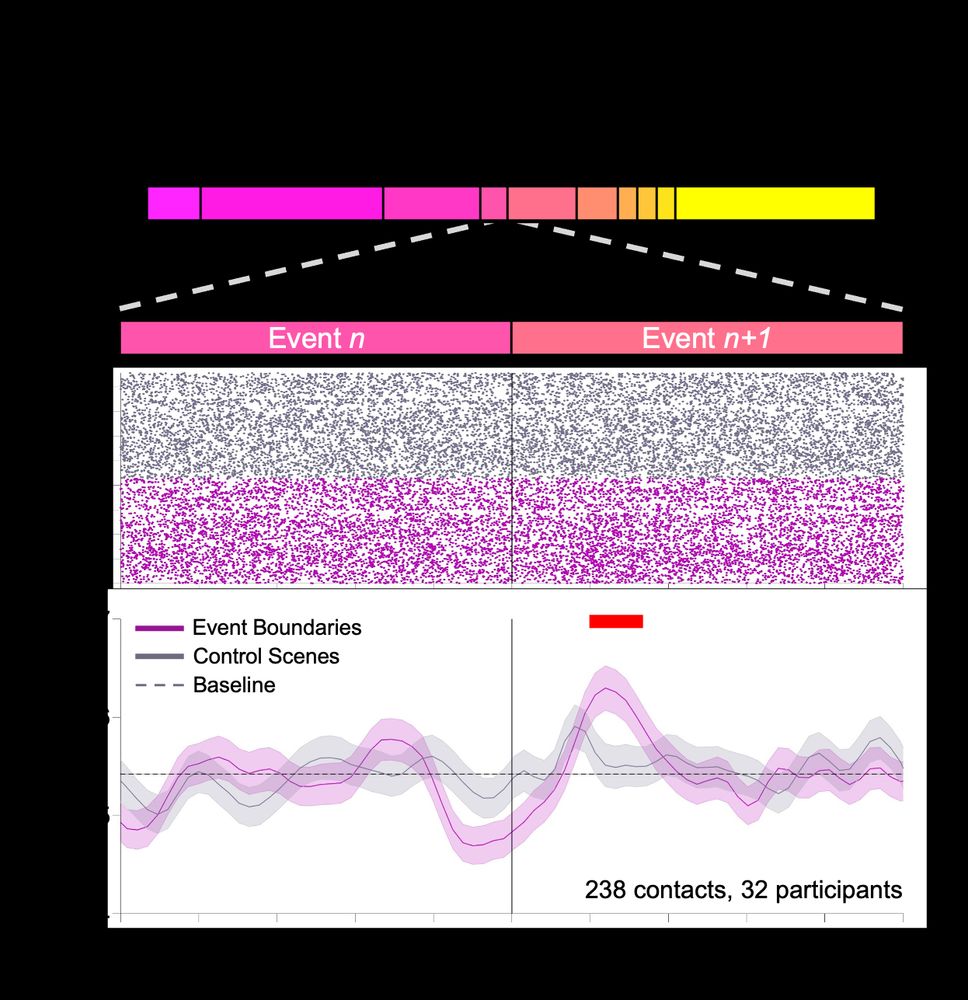
HFOs are a highly-synchronizing phenomenon, and we found that HFOs increase in activity ~2sec after the brain detects an “event boundary,” or timepoints where one “chunk” of an experience ends and another begins. This is a critical window for memory consolidation, or “replay.” (3/n)
30.07.2025 01:23 — 👍 0 🔁 0 💬 1 📌 0
When we go about our days, we experience a continuous stream of information. But when we recall it later, we tend to find that we’ve “chunked” this experience into individual, meaningful episodes. This process is called event segmentation. (2/n)
30.07.2025 01:23 — 👍 0 🔁 0 💬 1 📌 0
PhD Student in the FINN Lab at Dartmouth
https://csavasegal.github.io/
Assistant Professor, Drexel University | Cognitive Neuroscience | Spontaneous Thought | kucyilab.com
Incoming Postdoc at UChicago in Bakkour lab. PhD from WUSTL. Interested in how we build models of the world, naturalistic neuroimaging, and reinforcement learning.
official Bluesky account (check username👆)
Bugs, feature requests, feedback: support@bsky.app
Picower Professor of Neuroscience @ MIT
Cognitive neuroscience, executive brain functions, consciousness, brainwave dynamics, and bass guitar. You know, the good stuff.
https://ekmillerlab.mit.edu/
Associate Professor, Psychological & Brain Sciences, Johns Hopkins University.
theoretical neuroscience; open-ended cognition; memory
PhD, Systems Neuroscience. Postdoctoral researcher at UCSF (@ChangLabUcsf), investigating mechanisms of memory, speech and verbal thoughts in the human brain.
I study brains and sometimes use one.
https://www.alylab.org/
Computational cognitive neuroscientist at Princeton, studying learning and memory in humans. PI of @ptoncompmemlab.bsky.social.
Assistant Professor of Psychological & Brain Sciences at Washington University in St. Louis • memory, cognitive aging, & neuroimaging • pronounced like “ray” • send doughnuts • he/him
Cognitive neuroscientist | Prof @LMU_Muenchen | Memory, Navigation, Sleep, Eye Movements, Thalamus | iEEG, EEG, MEG, DBS | https://www.lmu.de/psy/en/chairs/neuropsychology-and-biological-psychology/cognitive-neuropsychology/
Cognitive neuroscientist (Assistant Professor at NYU), human episodic memory, M/EEG, ECoG, and behavior. How do we reinstate temporally dynamic, information-rich memories?
Professor of Cognitive Neuroscience
University of Oxford
https://www.staresinalab.com/
I’m a neuroscientist studying memory @ UCLA
🌌 *Were most of your stars out?* 🌌
Computational neuroscientist interested in cognition, computation, memory, decision making. Studying the human brain.
Professor @ Duke U • Fascinated by the 🧠 • Studying Memory using Mobile Neurotechnologies & Wearables • SuthanaLab.com
Established in 1992, the Center for Neuroscience is the interdisciplinary hub for neuroscience research and training at UC Davis. https://linktr.ee/UCDavisCenterforNeuroscience
















